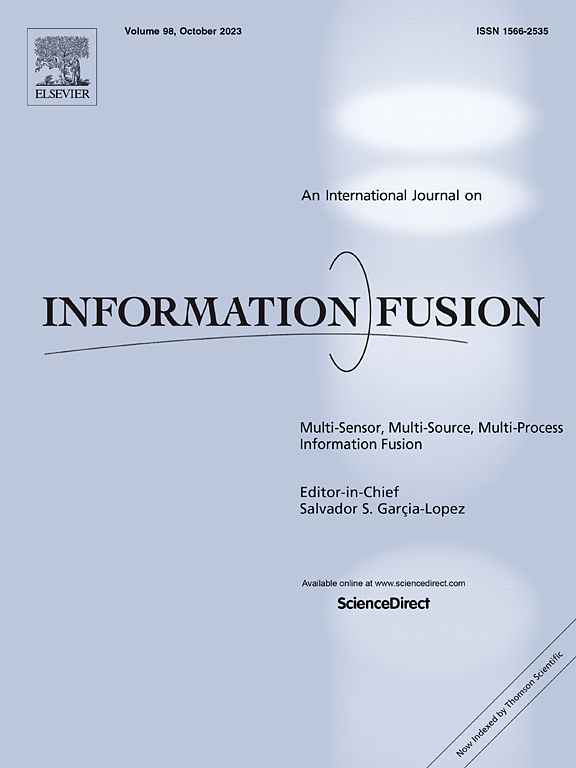When explainable artificial intelligence meets data governance: Enhancing trustworthiness in multimodal gas classification
IF 14.7
1区 计算机科学
Q1 COMPUTER SCIENCE, ARTIFICIAL INTELLIGENCE
引用次数: 0
Abstract
In the domain of artificial intelligence, the incorporation of multimodal data has become increasingly popular as a method to improve the performance of models by offering a more comprehensive range of information for learning. The gas classification, which is of utmost importance in multiple fields like industry, security, and healthcare, has received considerable interest. Nevertheless, a review of current research indicates that numerous studies suffer from inadequate data governance, resulting in subpar performance despite how complicated their proposed methodologies are. Although explainable artificial intelligence (XAI) techniques are gaining recognition for their ability to assist researchers in analyzing and enhancing model performance, their use in multimodal gas classification is still limited. This research presents a method that integrates strong data governance practices with XAI to improve the accuracy of models in classifying different types of gases using multimodal input. Our approach enhances data quality and offers a very efficient model architecture with a minimal parameter number of 0.8 million. The proposed model attains testing accuracies of 98.49% for the sensor modality, 96.48% for the image modality, and 99.4% for the fusion modality, surpassing the maximum accuracy achieved by existing state-of-the-art models, which stands at 99.2% with 106 million parameters. Notably, our model is 132.5 times smaller than the most accurate model currently used in multimodal gas classification studies. The proposed model’s robustness and trustworthiness are confirmed by extensive testing. The results demonstrate that our approach makes a significant contribution to the field of multimodal classification.
当可解释的人工智能与数据治理相结合:提高多模式气体分类的可信度
在人工智能领域,结合多模态数据作为一种通过提供更全面的学习信息来提高模型性能的方法已经越来越流行。气体分类在工业、安全和医疗保健等多个领域至关重要,引起了人们的极大兴趣。然而,对当前研究的回顾表明,尽管提出的方法多么复杂,但许多研究都存在数据治理不足的问题,导致其表现不佳。尽管可解释人工智能(XAI)技术在帮助研究人员分析和提高模型性能方面的能力正在获得认可,但它们在多模式气体分类中的应用仍然有限。本研究提出了一种将强大的数据治理实践与XAI相结合的方法,以提高使用多模态输入对不同类型气体进行分类的模型的准确性。我们的方法提高了数据质量,并提供了一个非常有效的模型架构,最小参数数为80万。该模型的传感器模态测试精度为98.49%,图像模态测试精度为96.48%,融合模态测试精度为99.4%,超过了现有最先进模型在1.06亿个参数下达到的最高精度99.2%。值得注意的是,我们的模型比目前在多模式气体分类研究中使用的最精确的模型小132.5倍。通过大量的测试验证了该模型的鲁棒性和可信性。结果表明,我们的方法对多模态分类领域做出了重大贡献。
本文章由计算机程序翻译,如有差异,请以英文原文为准。
求助全文
约1分钟内获得全文
求助全文
来源期刊

Information Fusion
工程技术-计算机:理论方法
CiteScore
33.20
自引率
4.30%
发文量
161
审稿时长
7.9 months
期刊介绍:
Information Fusion serves as a central platform for showcasing advancements in multi-sensor, multi-source, multi-process information fusion, fostering collaboration among diverse disciplines driving its progress. It is the leading outlet for sharing research and development in this field, focusing on architectures, algorithms, and applications. Papers dealing with fundamental theoretical analyses as well as those demonstrating their application to real-world problems will be welcome.
 求助内容:
求助内容: 应助结果提醒方式:
应助结果提醒方式:


